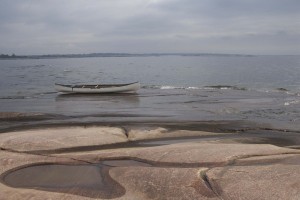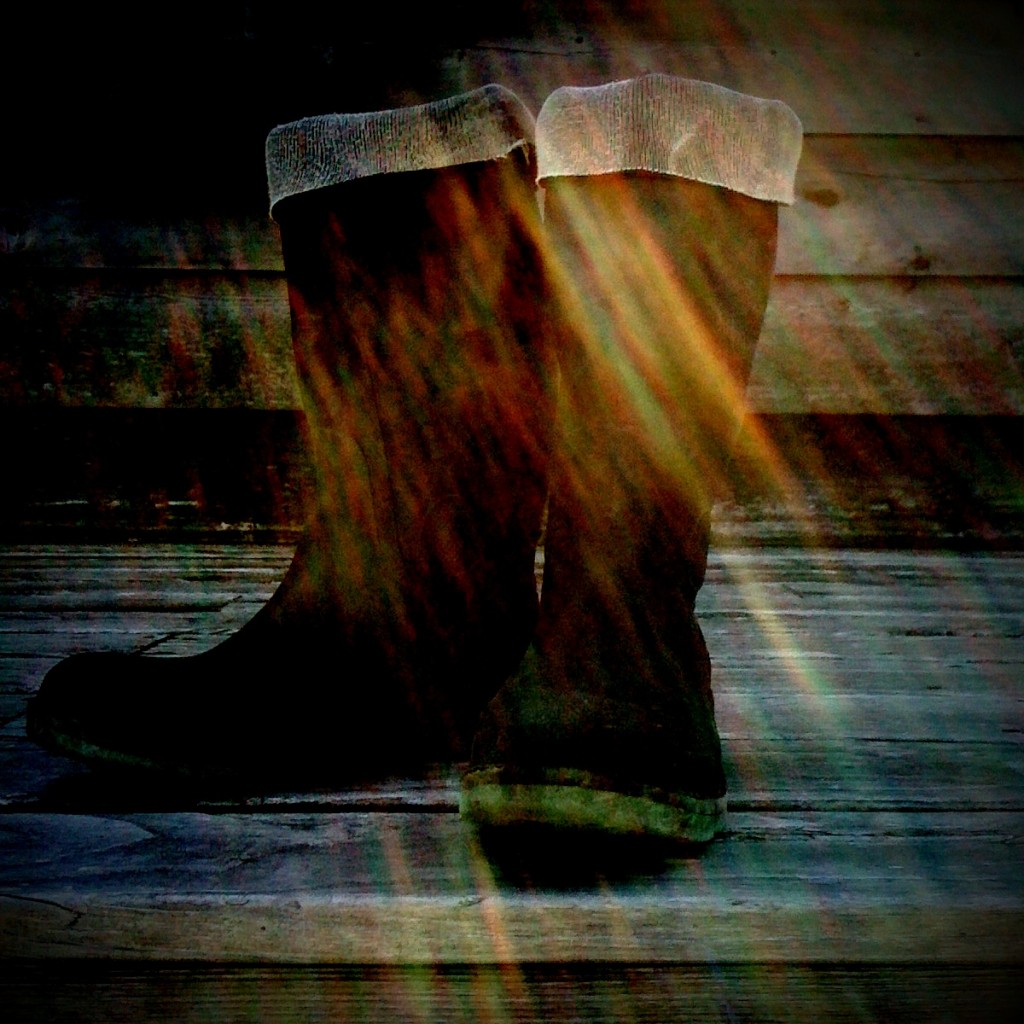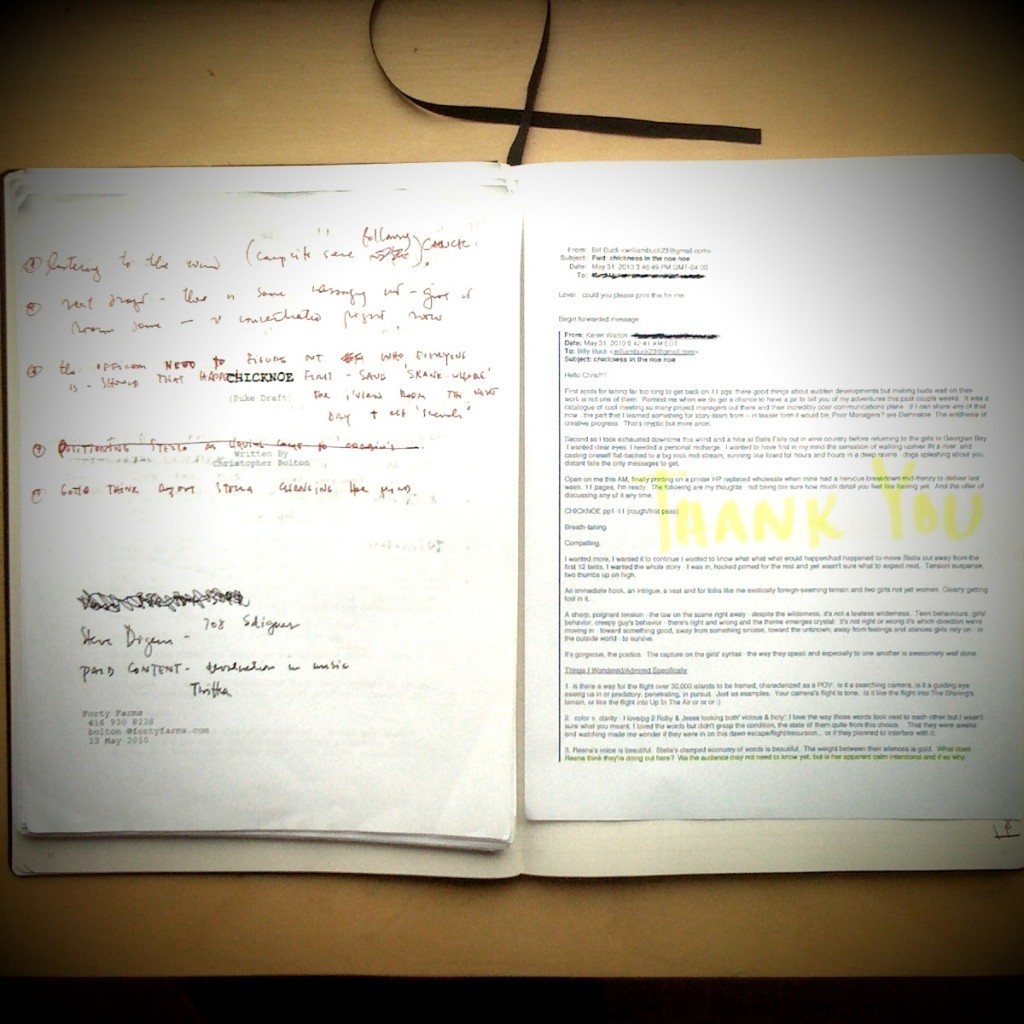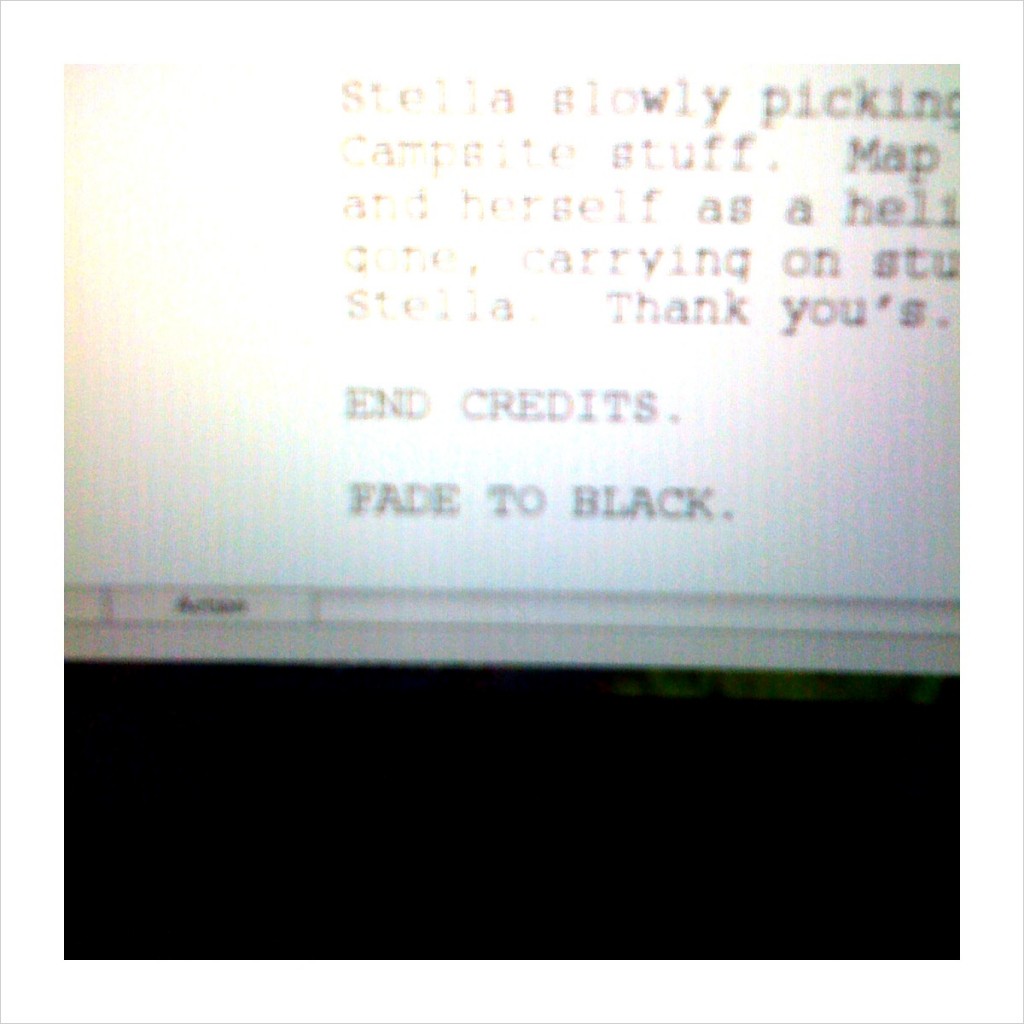Back in the early days when I was a budding entertainment news writer over at Juice, some DVDs were sent my way for review. After being pleasantly surprised by season one of the best show I had never heard of, I wrote my review of Rent-A-Goalie. What came after was not only a (surprising!) thank you email from (writer, producer, actor)Â Christopher Bolton himself, but a follow-up interview, and then a friendship. While I was disappointed to hear that after three seasons there would be no more new episodes of the show, I was thrilled to hear about what Christopher was working on, and as a writer and an editor AND someone who is very involved in the online and social media world, his latest 6-platform Transmedia project was nothing short of fascinating to me.
I wanted to hear more about it, and I wanted my readers to hear more about it.
And I wanted to be a part of it.
(And shhh…don’t tell anyone, but I DID get my hands on the first 13 pages or so of the Chicknoe script, and I am just going to tell you right now, I am dying to sink my teeth into the rest)
And because Christopher wants YOU to be a part of it too, he and I sat down for another interview. Only because I live in Atlanta/Milwaukee these days and he is home in Ontario, by “sat down,” what I really mean is “exchanged many emails.”
And this is what came of it:
AM: Tell me a little bit about Chicknoe.
CB: Hmmm….Chicknoe is a project that meets a bunch of criteria I’d set for myself vis-a-vis goals in entertainment. It is a feature film, part of a Transmedia project that I’m working on that revolves around themes of Search, Identity, Nature. For a crash course on the Transmedia you can check out…
and
insearchofdotdotdot.wordpress.com
The second site has a lot of background on the movie as well as some insight into the process of writing it.
So, to answer your question: Chicknoe is an observational movie about two girls escaping a shitty situation and going on the run for a couple of weeks. To clear their heads. Re. the subject matter – the murder of Reena Virk in 1997 affected me deeply as did Jonathan Womback’s death in 1999. I was obsessed with teenage brutality, feeling it palpably. Still do. In response to that preoccupation, I position a happy ending: what if just one of those kids under the bridge in Victoria had had a crisis of conscience, changed their minds, avoided getting wrapped up in the mob mentality? Chicknoe is a potential answer to that question.
The other driver behind this is the portrayal of kids/teens in general but girls/young women specifically. I have kids and I want them to see that I at least tried to portray them realistically, that I tried to understand them. I want my daughter to see that I attempted to at least acknowledge the pressures, problems, ups, and downs of her day-to-day even if I wouldn’t ever totally understand them. I also wanted to express a little rage.
And then there are the professional goals I mentioned earlier: I want to make a feature film, have since I was in film school in 1995. I was taught to steal from the best – was it Mark Twain said something about that? – and this is my homage paid to some films that have had a good effect on me – David Lynch’s The Straight Story, and Kelly Reichardt’s ‘Old Joy’ and ‘Wendy and Lucy’. Stunning films all three. Brave. Very respectful of their audience.
And last goal – the challenge of writing teenage girl was one that scared the shit out of me ergo seemed worth the effort. I was fully prepared to flame right the hell out but wanted to give it a try.
AM: The girls in the story explore the terrain of Georgian Bay. Why there? What is your connection to it?
CB: Georgian Bay is my very most favourite spot on earth. About 8 or 9 years ago it became where I knew I would end up and I began searching for a place right away. Not too seriously; I’d look every spring when the listings started popping up. Nothing ever felt right. Then a little island between Pt. Au Baril and The French River fell into my lap, placed there by a friend with love, and you’d have to pry the landscape from my rigid, dead fingers to get it away from me, or me from it, or mixed metaphors are excellent. This story is my chance to write for it and to it. It was partially inspired by a trip I took last September with a guy who grew up in the archipelago through which the girls travel. It was a day trip in a powerboat but I could see how time here would affect in a very big, very deep and different way. It seemed like a good place for teenage girls to take a decompression timeout and a cool place for them to rebel.
AM: How is this style of writing different than what we are used to seeing from you, i.e., 30-minute comedy? Is there more freedom with a longer script because you don’t have the pressure of wrapping up a plot in a half hour? Which style of writing comes more naturally to you?
CB: This is a great question. Long format is about more than just the space you get for the writing. It’s also about making the film. You write it differently because you’re seeing how you want to see it, the visual language much more important than in a half hour comedy. I have to admit that writing drama comes easier than comedy. Death is easy. Comedy is Hard. – who said that? (AM: I have heard it attributed to at least 8 different people, but I *think* it was George Bernard Shaw. Maybe. I could be wrong. It has happened before) Man, I suck with crediting quotes today, don’t I? So, yes, the drama comes a bit easier but it was a good day when comedy started popping up in the writing of Chicknoe. It made me immensely happy to discover the girls had senses of humour.
Upon reflection I also realize that writing comedy is way more fun with a buddy. The reason Rent-A-Goalie sizzled was the energy began in the writing room. We had such a good time conceiving that show and all its situations and bits. Writing this film was exactly the opposite though I did have some brilliant support. Part of the idea behind this project – in the bigger Transmedia sense – is that I want to include the audience in building it. That wordpress blog above is the concept’s beta testing, released to a few people. The response was great. People took the role they played seriously. They gave input and made it better. I also had two FoTPs (Friend of The Project) Walty and Maria whose belief in this script made a real difference. To say nothing of the darn-near-perfect WTB. It all began at Walty’s dining room table. For a day we ate sandwiches from the Polish Deli, drank coffee and talked about writing this film, writing young women, writing nature. I went up north a couple of days later to start drafting. I entered a script writing thingee, a community that gets together every year for the month of April to challenge/support one another to write a movie. It was fantastic mostly because it truly is a layman’s program – people who have day jobs but are film nuts or want to take a kick at the writing can – and it was so incredibly inspiring to be a part of that because they do it. They really do it. They’re not jaded writers; they’re excited writers. That was infectious.
Script Frenzy was also a way to manage my expectations. I knew I was not going to write 100 pages in 30 days but I was committed to writing as many as I could. I think I got half way through.
AM: From beginning to end, how long did the script take the write? Is writing a linear process for you, i.e., did you write it in order, or did you jump around a little?
CB: This was the amazing thing. I’ll find any reason not to write, so Script Frenzy lit a serious flame under my ass. I tricked myself into gettin’ a move on. I delivered the first draft about 7 weeks from start to finish though I’d been breaking story for a while before that. Breaking story is the tough sledding.
I write primarily in a row but will jump around from time to time. If I do that it’s usually to work from the end back some. My image for that is something I learned on a trip through the Rockies in my 20s. We stopped in Kicking Horse Pass to look at this train tunnel that was spiraled inside a mountain. Built in 1909 or thereabouts they actually began the tunnel from the top and bottom and however long later, 4 years I think, they met in the middle less than a foot off one another!?!!!! Can you believe that? Without computers they engineered the shit out of that thing before gettin’ diggin’. Writing is like that.
AM: You are writing about 16-year-old girls. How do you get into their headspace? Where does your research come from? How have the girls evolved over the course of the story? Who do you envision in these roles; anyone specific?
CB: I’ve discussed finding these actors with my management team and their hope is that I find them so they can sign them. Finding one young woman to dig this deep, give this much range is tough. I need two and one of the has to be a good canoer. It used to be actors only had to lie about driving standard. Now this.
It was a deliberate but crapshoot of a process getting into their headspace. It’s a cliche but it was a process of getting to know them. I marked a lot of space in the early days of the script with ‘this could happen or that could happen’ because I didn’t know them enough to know what they would do. There was a tipping point though, where I fell in love with much that the script was and who they were too. It seemed right to let them arrive, show me who they were, because that’s what I was after in terms of message – that we shouldn’t talk at our kids but let them instead show us who they are. Otherwise they end up screaming at us who they are and that’s not pleasant for anyone.
AM: Now that the script is written, what is the next step for you? For it?
CB: Well, I’m trying new things where entertainment business models are concerned with this project. On Chicknoe we are attempting a crowdsourcing model to raise about a third of the financing. That plus the blog site – which will be off wordpress and on to a dedicated site soon for which we will do a proper launch – equals trying to get people to understand that they pay for their entertainment anyhow so we want to give them value by making it an experience soup to nuts. We’re asking them to invest in whatever way behooves them, whether that be financially or with stories about their own experience or with a request to read and comment on a script. The crowdsourcing site is…
AM: What do you want people to take from this film?
CB: I don’t. I want people to give to this film.

















2